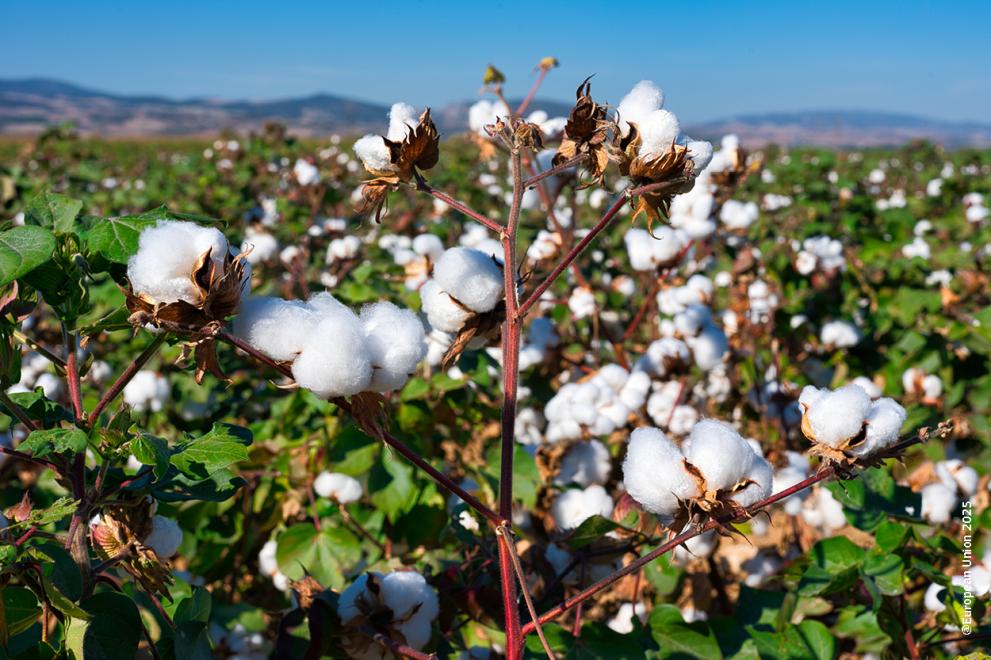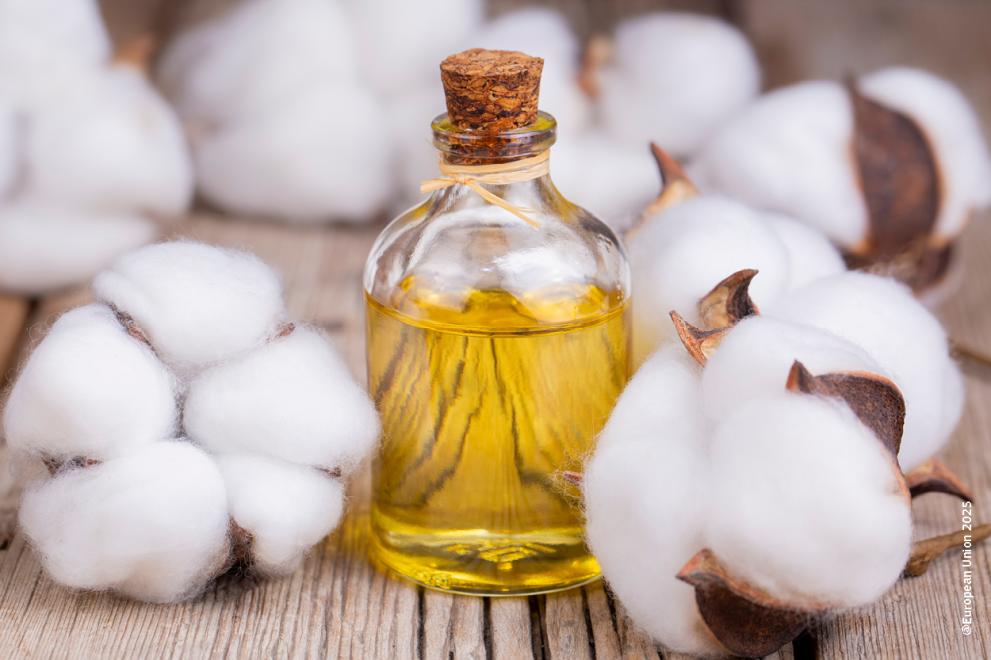Cotton production in the EU
Over the past years, the area dedicated to cotton production in the European Union has shown some fluctuations: an increase from 325 000 hectares (ha) in 2017 to 362 000 ha in 2020, followed by a downward trend, reaching 290 000 ha in 2024. In 2023, the EU unginned cotton production reached 10.4 tonnes which represents 4% of world production.
Cotton is produced only in three EU countries, particularly in Greece and Spain. Although it represents a relatively small share of overall EU agricultural output, cotton plays a crucial role in local economies and rural employment in European specific regions.

Greece (Central and Northern regions) is the main EU cotton producer, traditionally cultivating cotton since the late 19th century, with a share of 80% of European cotton area and production.
Cotton cultivation accounts for nearly 6% of total agricultural land and supports approximately 40 000 cotton growers nationwide.
Cotton production in Spain
Spain (mainly the region of Andalucía) has a share of around 20% of EU area and production. The cultivation dates from the middle age, although its growth and expansion has occurred in the middle of the 20th century.
Cotton production in Bulgaria
Bulgaria produces cotton on around 2 000 ha.
Cotton cultivation and processing of fibres
Cotton cultivation begins with the planting of cotton seeds, typically in spring. The plants grow and produce fluffy bolls containing cotton fibres and seeds. Once mature, the bolls are harvested, either by hand or mechanically, and sent to a gin, where the fibres are separated from the seeds.
The long fibres, known as lint, are then cleaned, pressed into bales, and sent to textile mills for spinning and weaving. The remaining short fibres, or linters, are removed from the seeds and processed for industrial and consumer products.
This process ensures efficient use of the entire cotton plant.
Uses of Cotton
 Cotton by-products
Cotton by-productsCotton is one of the most widely used natural fibres, valued for its softness, breathability, and versatility in producing clothing, home textiles, and industrial fabrics. Its by-products, such as cottonseed and linters, are processed into edible oil, animal feed, paper, personal care items, and medical supplies.
 Cotton as sustainable material
Cotton as sustainable materialAs a renewable and biodegradable resource, cotton also contributes to more sustainable production across various sectors.
Cotton in the CAP
Cotton aid was introduced in 1981, with the accession of Greece to the then European Community. Like any other farmer, as part of the common agricultural policy (CAP) cotton growers are entitled to receive direct payments as well as additional support in the form of eco-schemes, provided that the farming practices employed meet the environmental criteria established in the respective EU country's CAP Strategic Plan, as well as other rural development schemes.
In addition, the EU provides a crop-specific payment for cotton, limited to a certain base area per EU country. This aid is paid per hectare and subject to minimum quality of cotton that is actually harvested. To be eligible, farmers must grow cotton on land authorised by the EU country, using seeds of authorised varieties and harvest under normal growing conditions (according to Regulation (EU) 2021/2115). The purpose of this crop-specific payment is to ensure against any risk of disruption to production in the cotton producing regions.
A maximum of 301 500 ha are eligible for the crop-specific payment for cotton each year. Of these, 250 000 ha are located in Greece and 48 000 ha in Spain.
Cotton’s contribution to sustainable agriculture
- Environmental: cotton cultivation is increasingly adopting eco-friendly farming techniques, such us precision agriculture and integrated pest management to minimize environmental impact. These practices ensure soil health, reduce water usage, and support biodiversity, paving the way for a sustainable future.
- Social: Cotton farming supports rural communities by creating employment and improving the quality of life with initiatives focusing on fair labour practices ensuring that workers receive fair pay and work in safe conditions, contributing to social equity and welfare.
- Economic: The cotton industries boost local economies by contributing to GDP and supporting ancillary sectors such as ginning, spinning, and textile manufacturing. By fostering innovation and efficiency, these industries strengthen their competitive position in the global market.
Legal basis
Regulation (EU) 2021/2115 establishing rules on support for strategic plans to be drawn up by EU countries under the common agricultural policy.
Commission Delegated Regulation (EU) 2022/126 – supplementing Regulation (EU) 2021/2115 of the European Parliament and of the Council with additional requirements for certain types of intervention specified by EU countries in their CAP Strategic Plans for the period 2023-27.
Commission Implementing Regulation 2017/1185 laying down rules for the application of EU regulation 1307/2013 and EU regulation 1308/2013 as regards notifications to the European Commission of information and documents.
